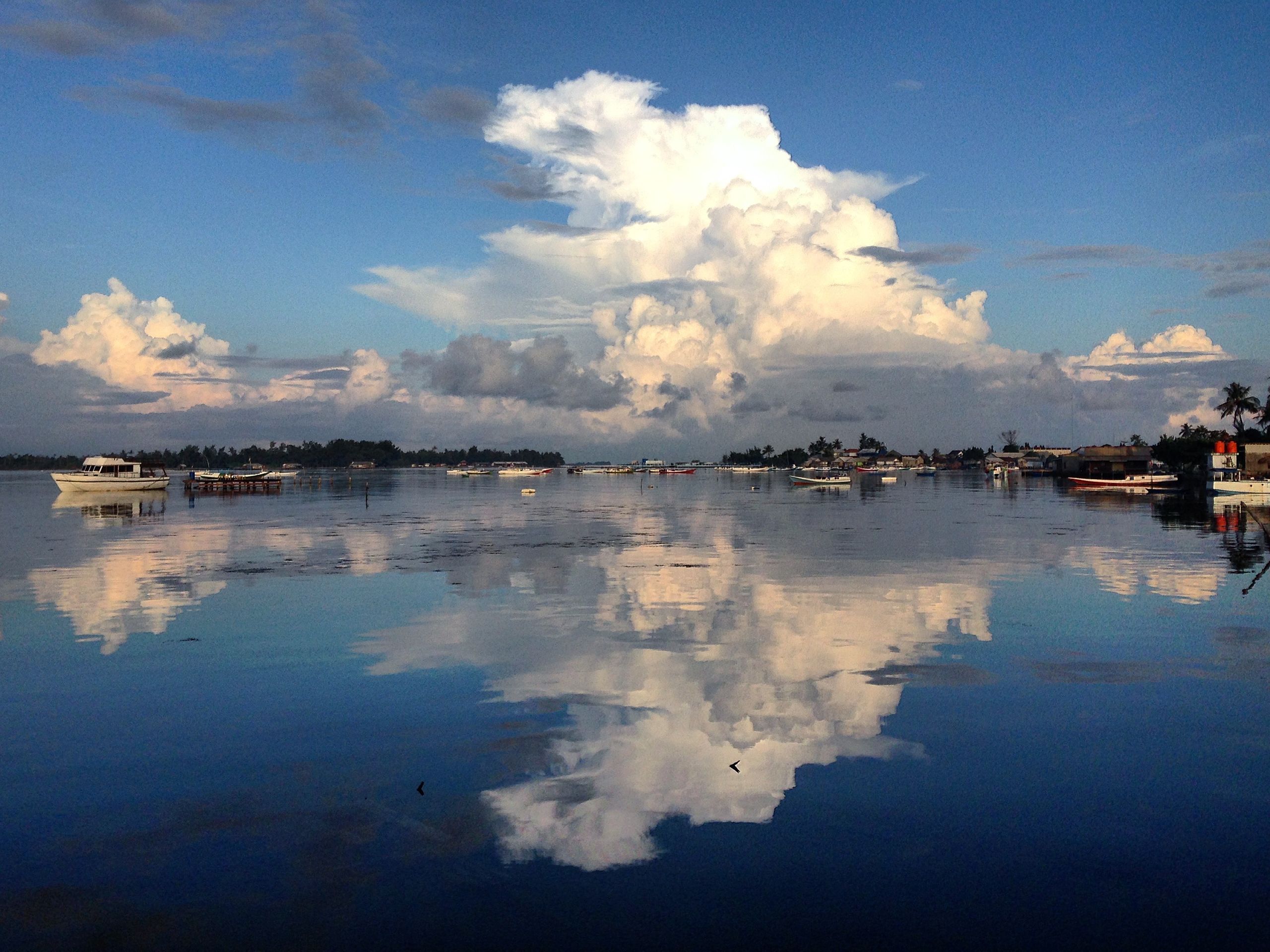
ausderfernebetrachtet
vakantio.de/geschichtenvonunterwegs
Death Road
പ്രസിദ്ധീകരിച്ചു: 18.10.2024
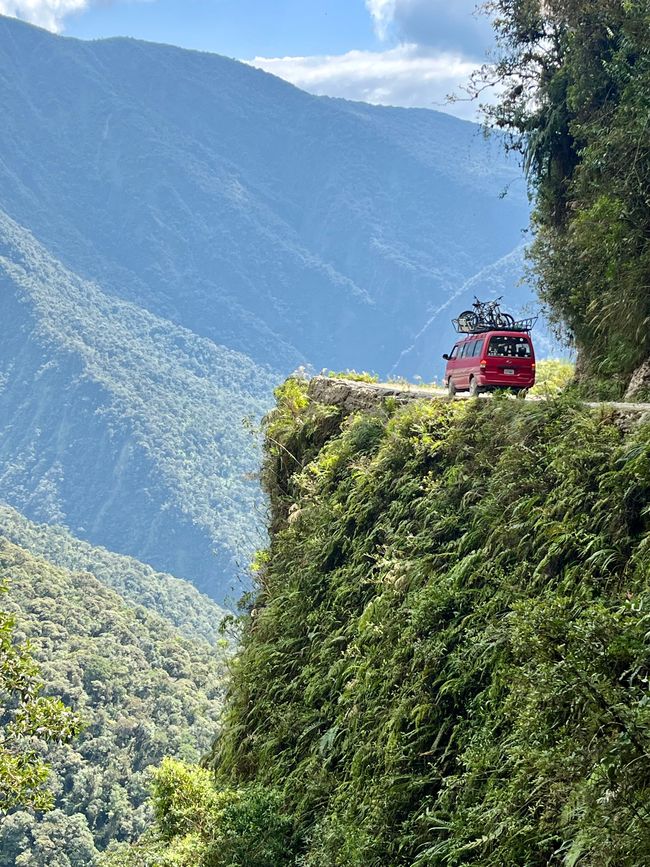
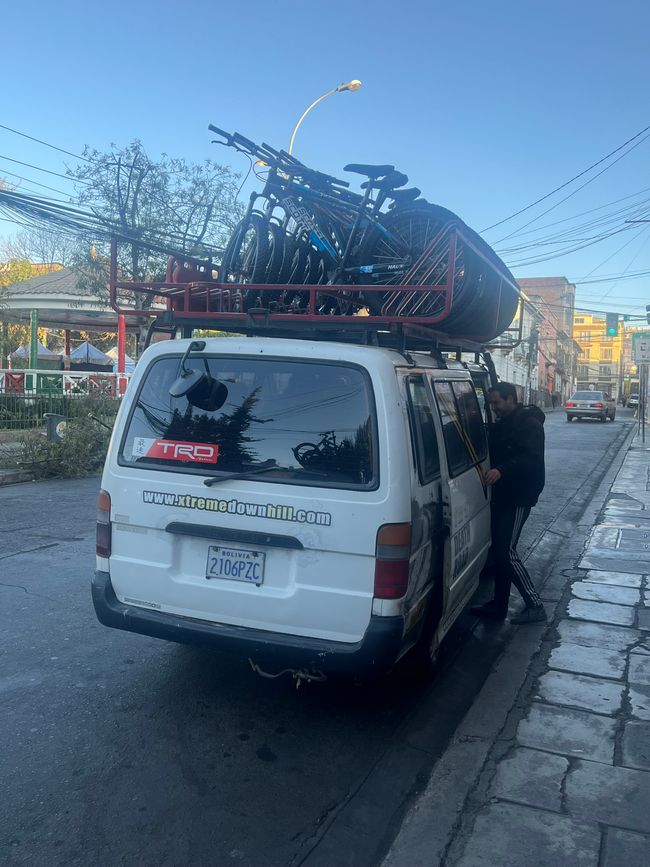
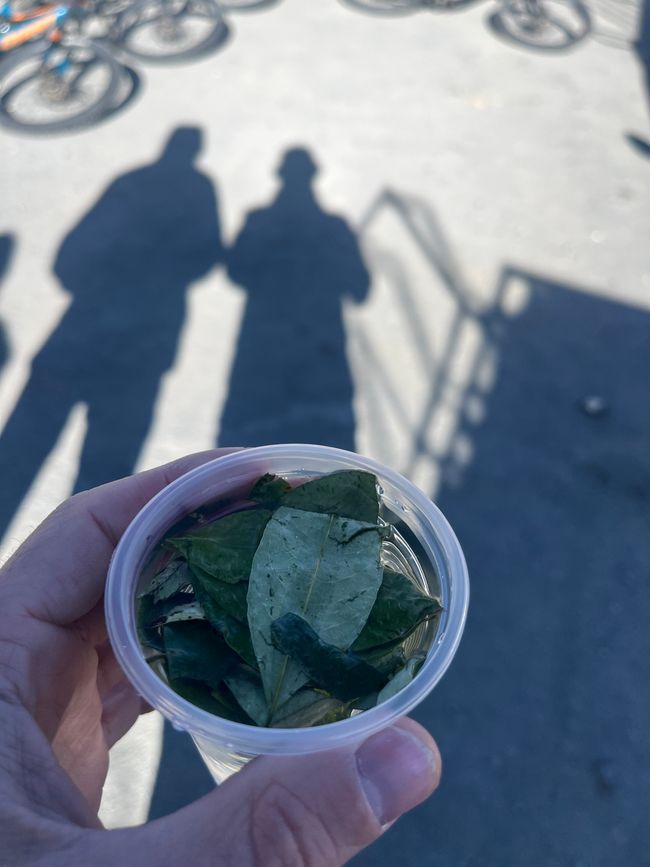
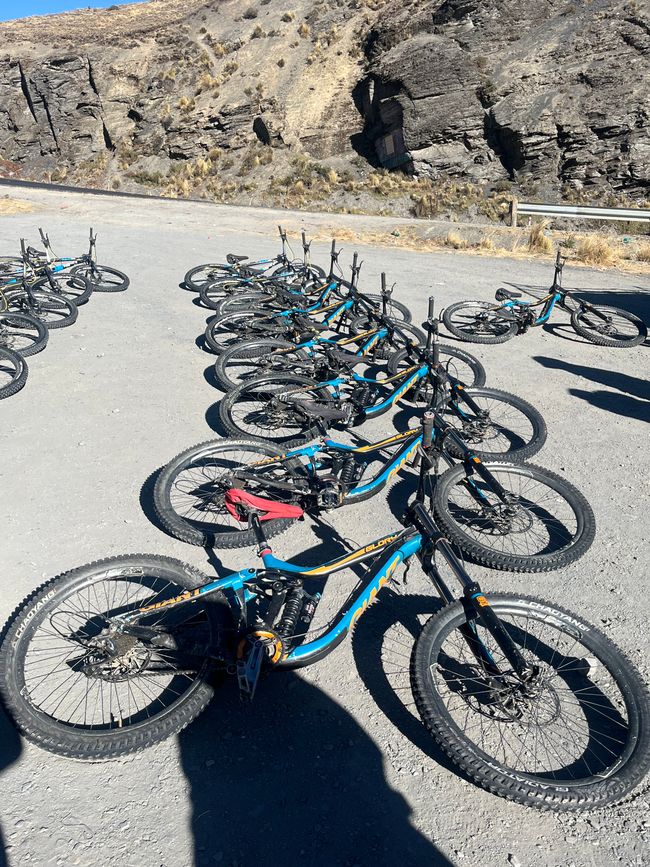
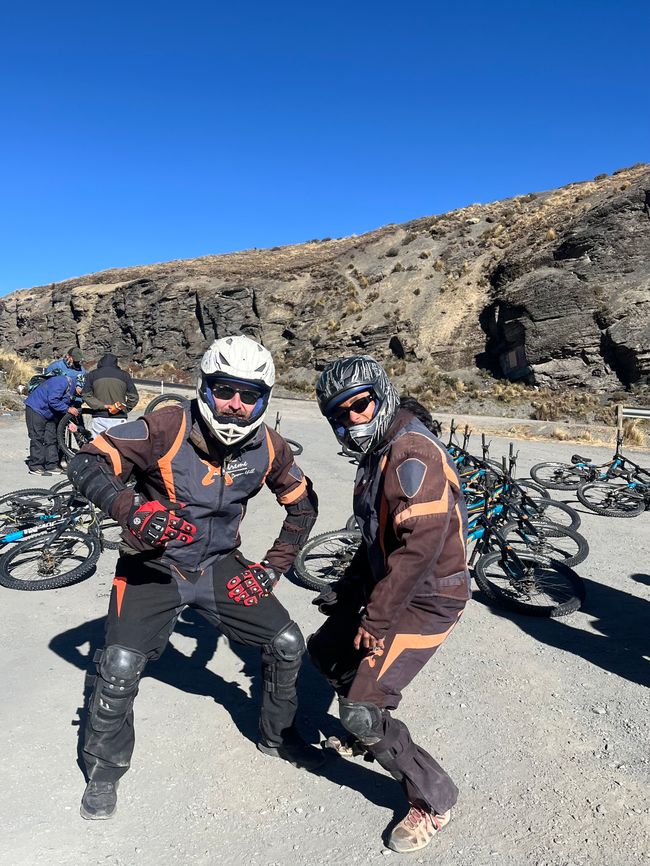
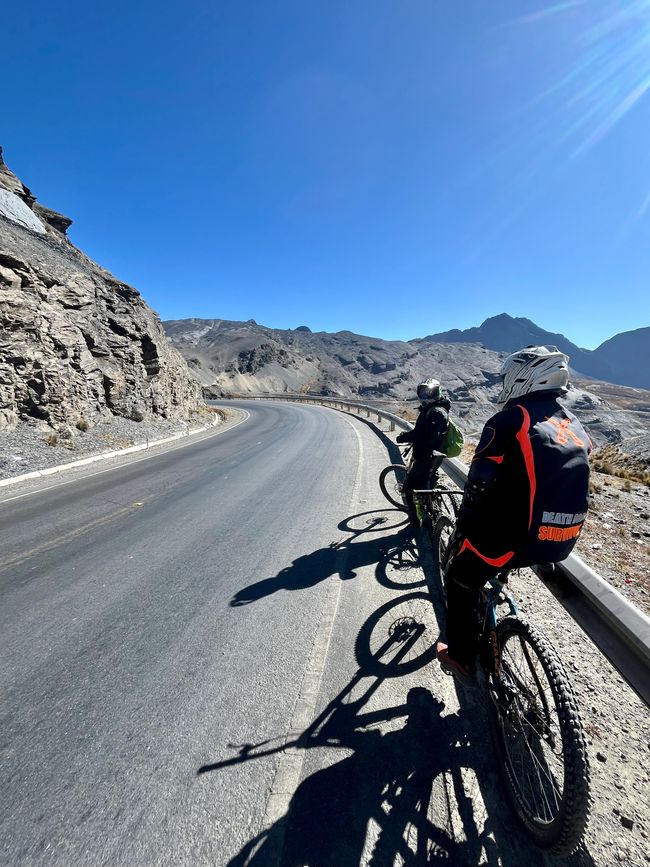
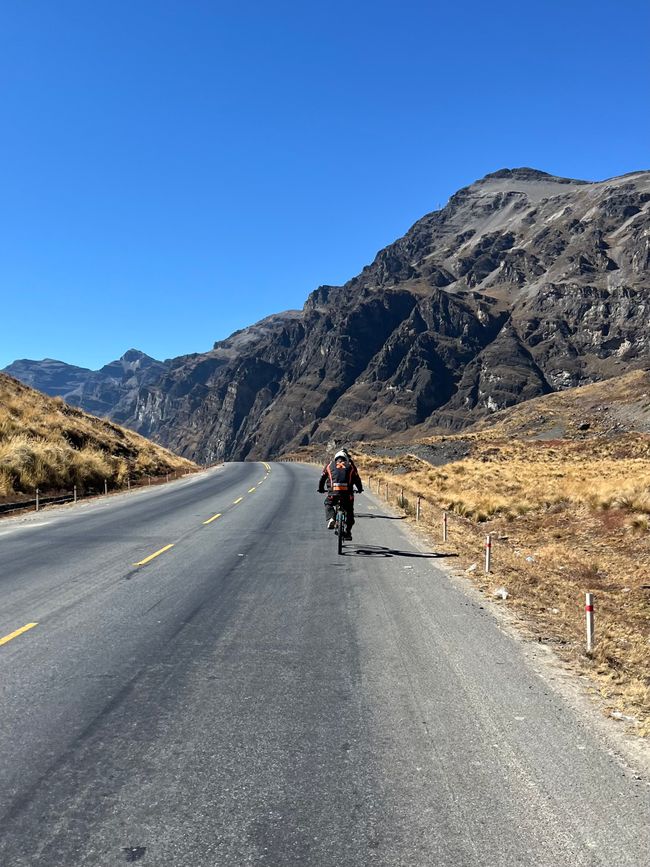
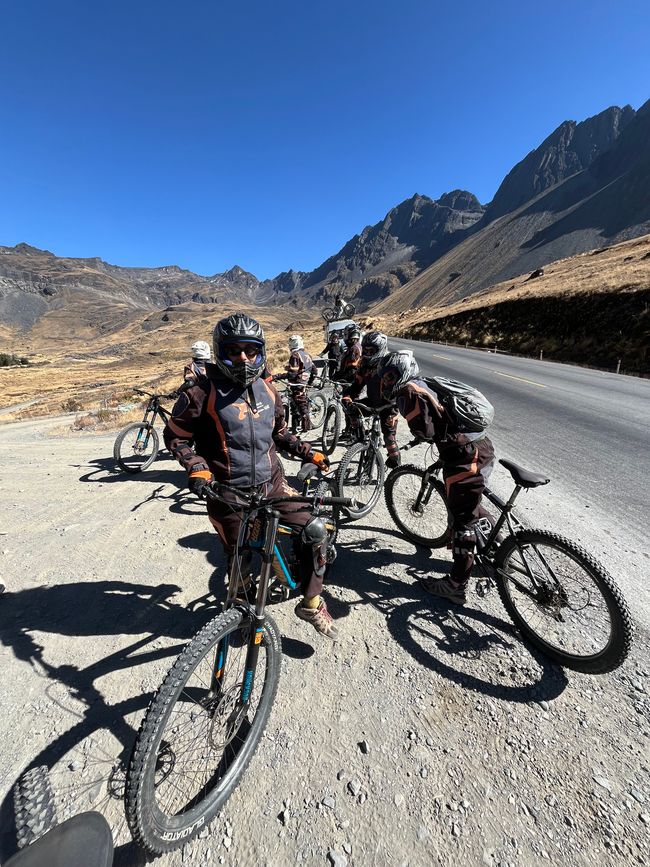
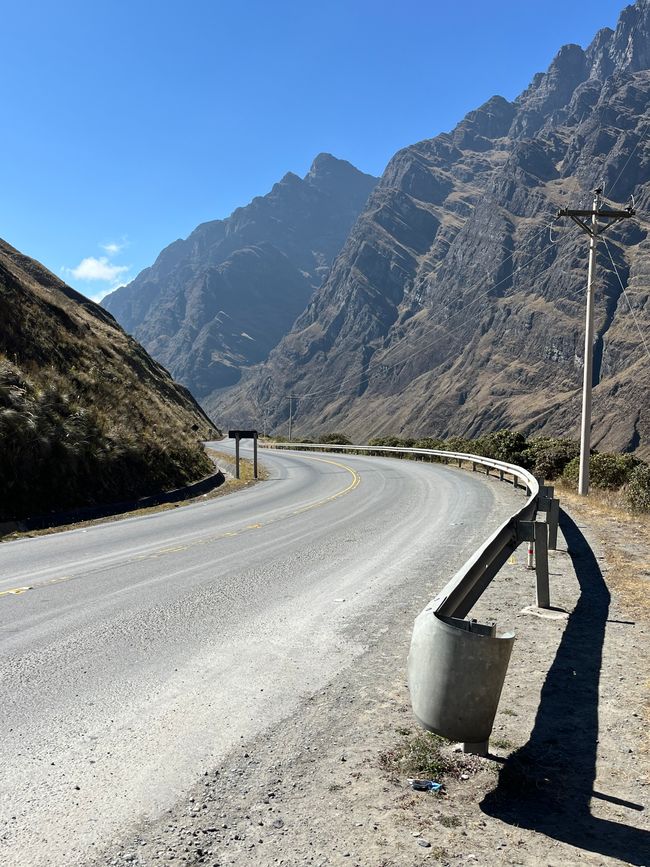
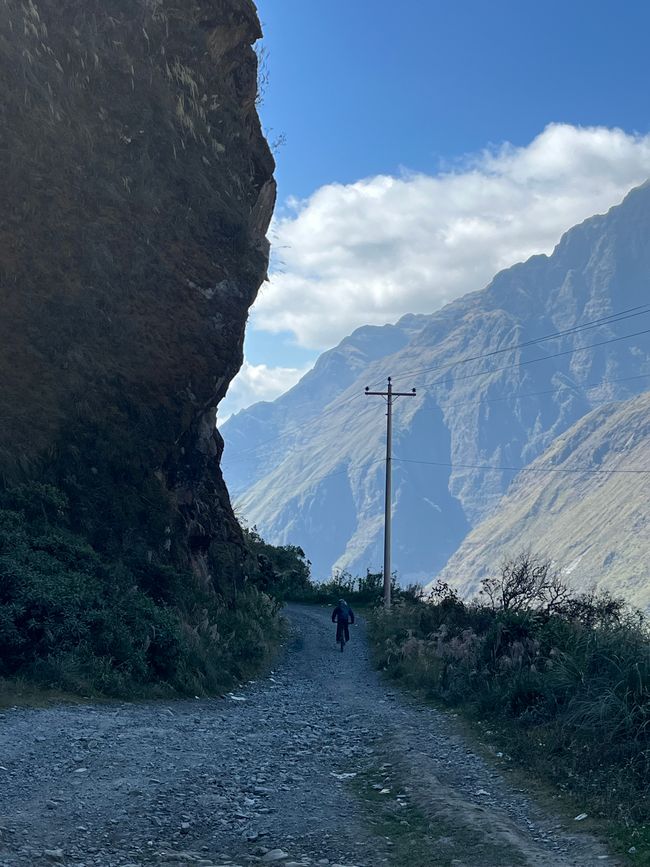
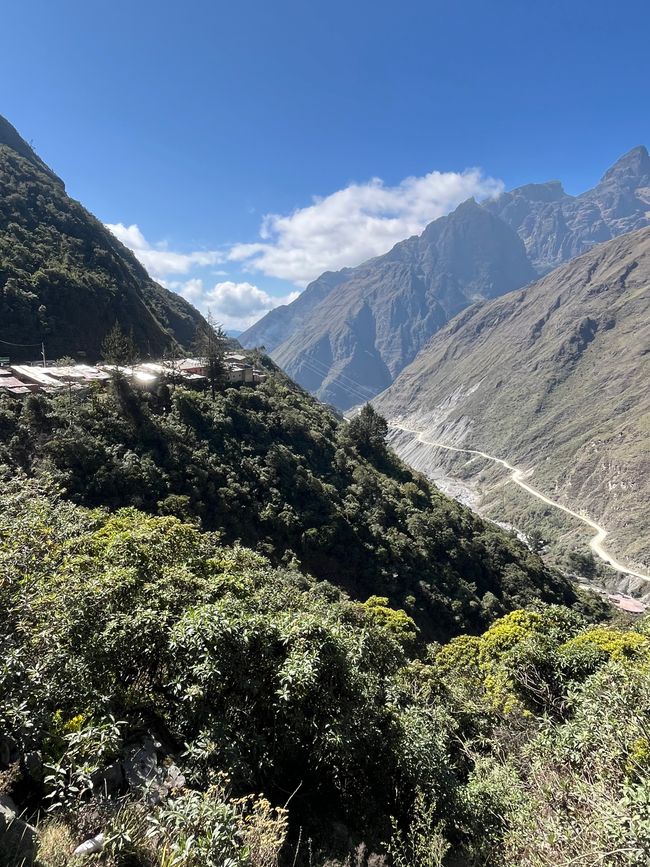
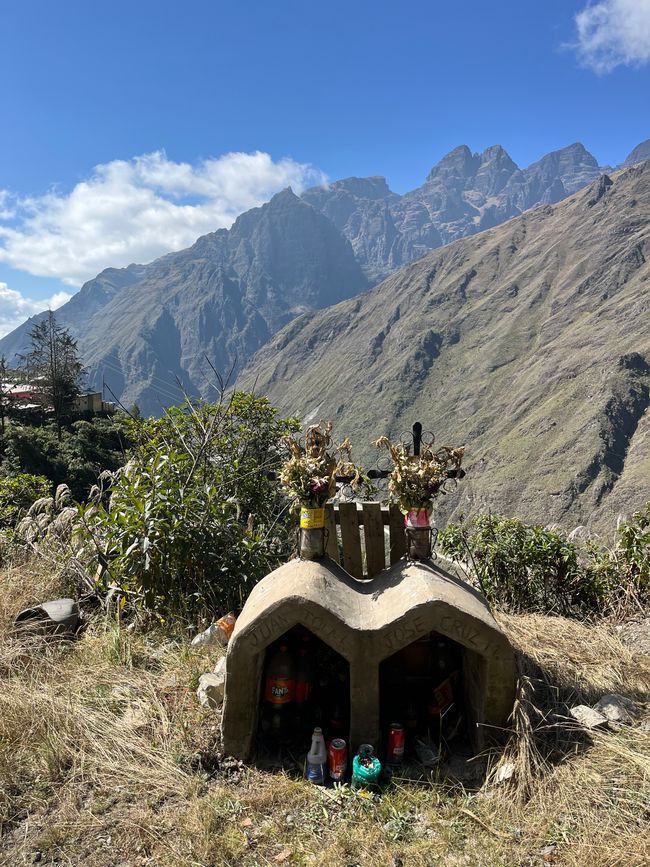
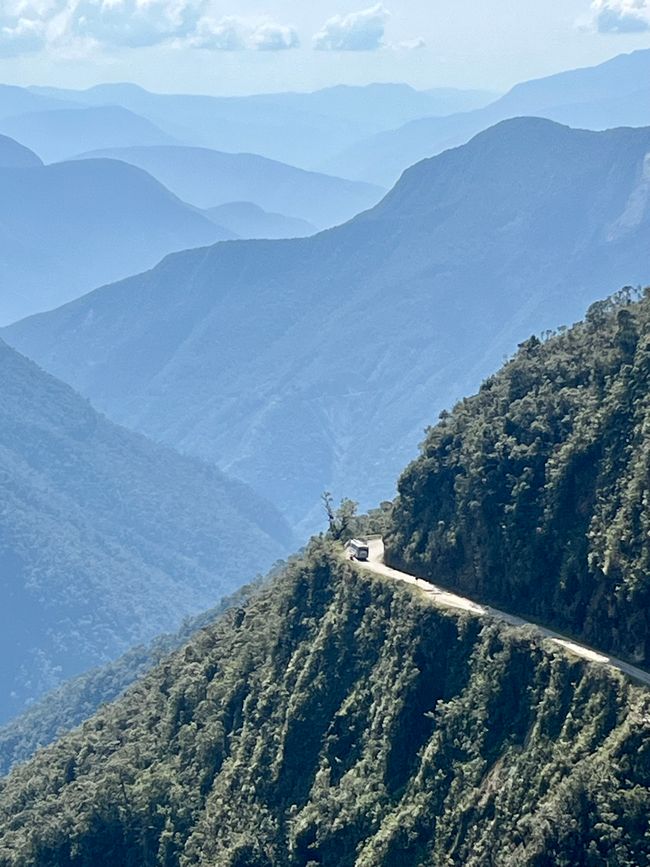

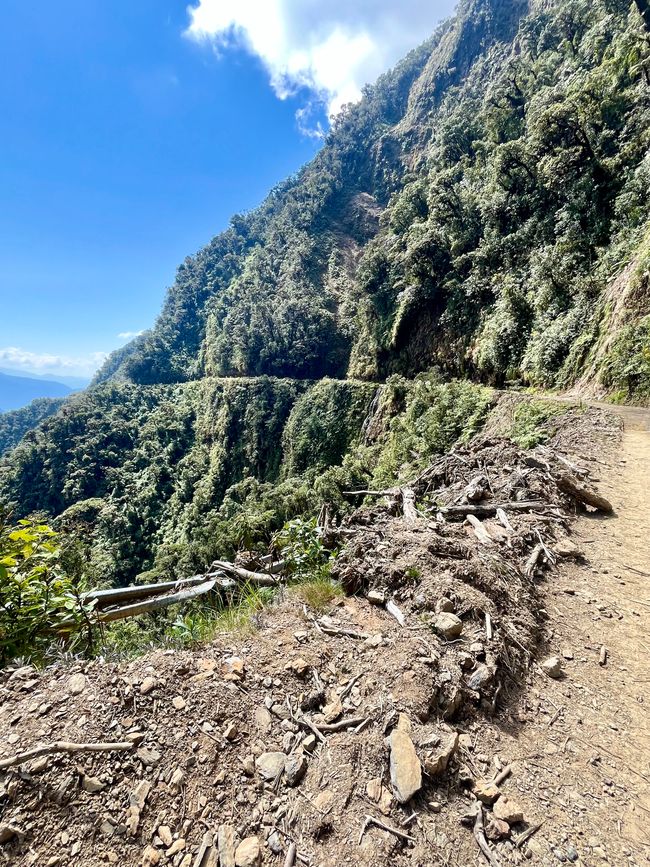
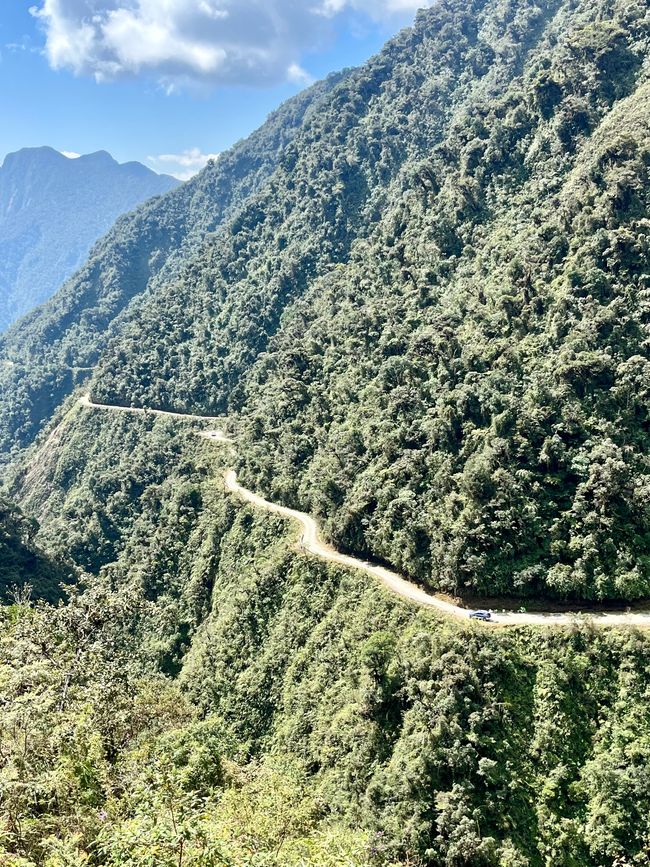
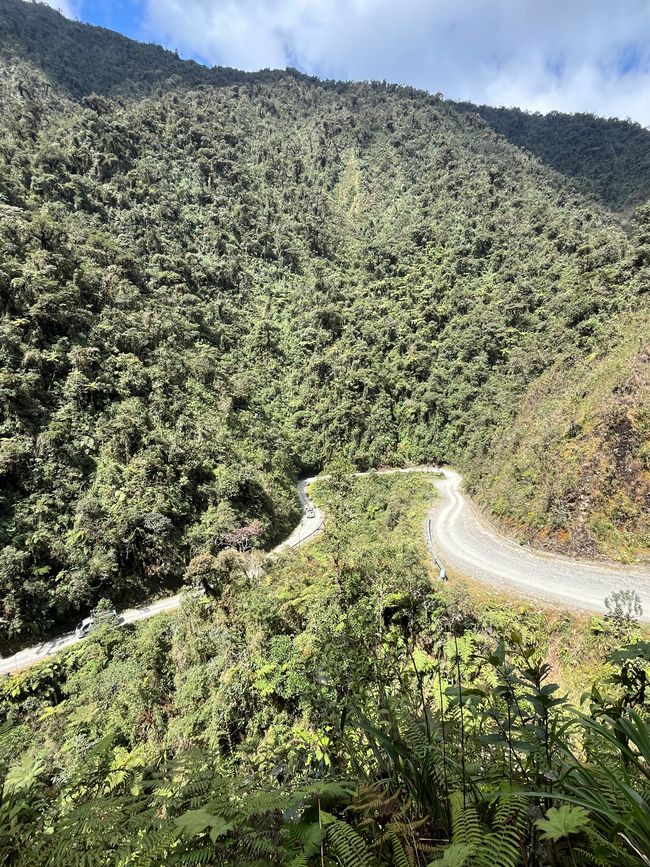
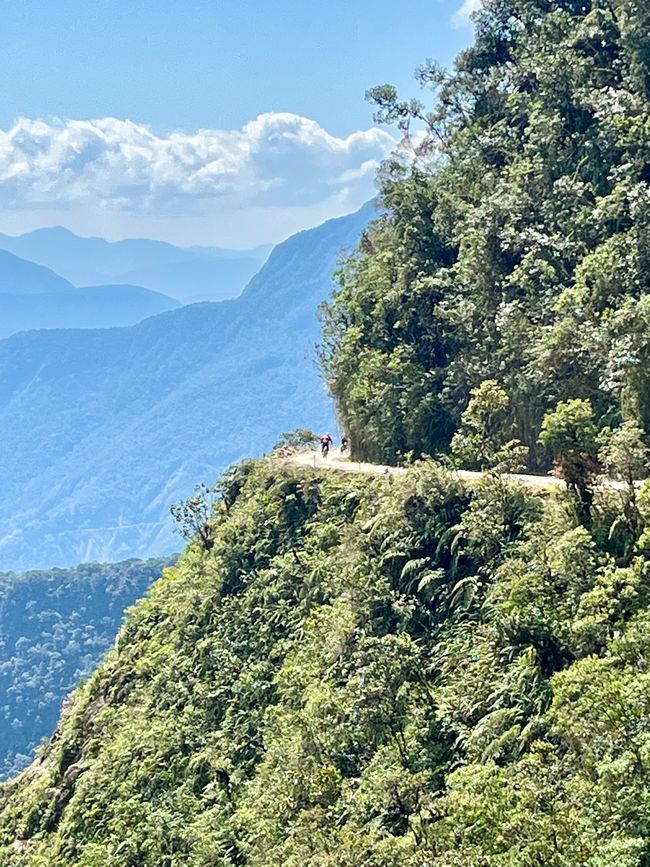
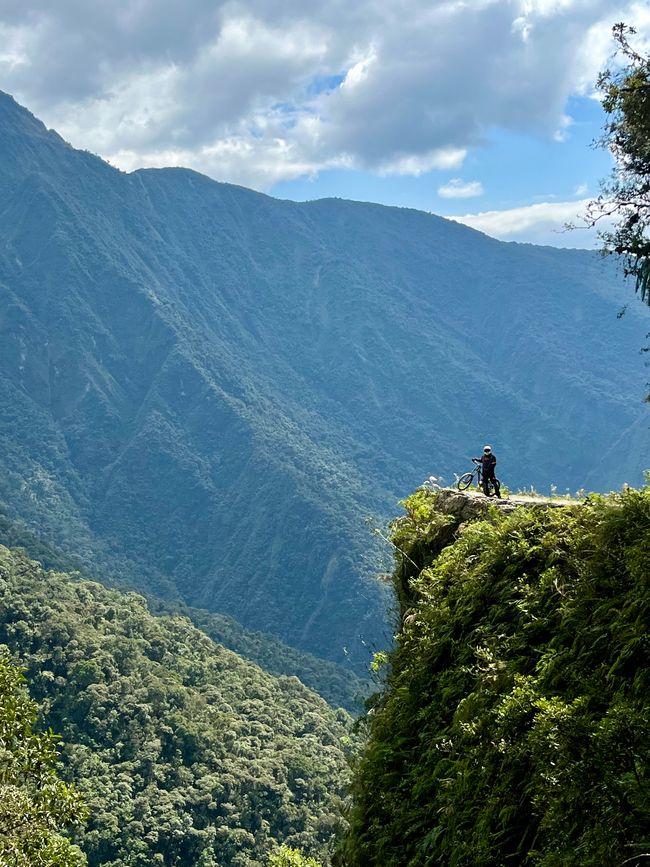
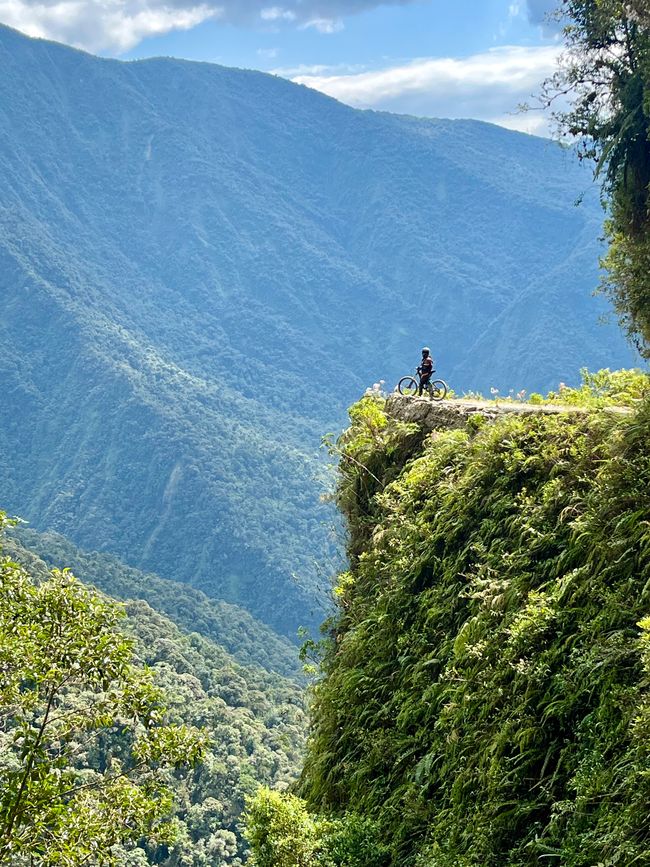
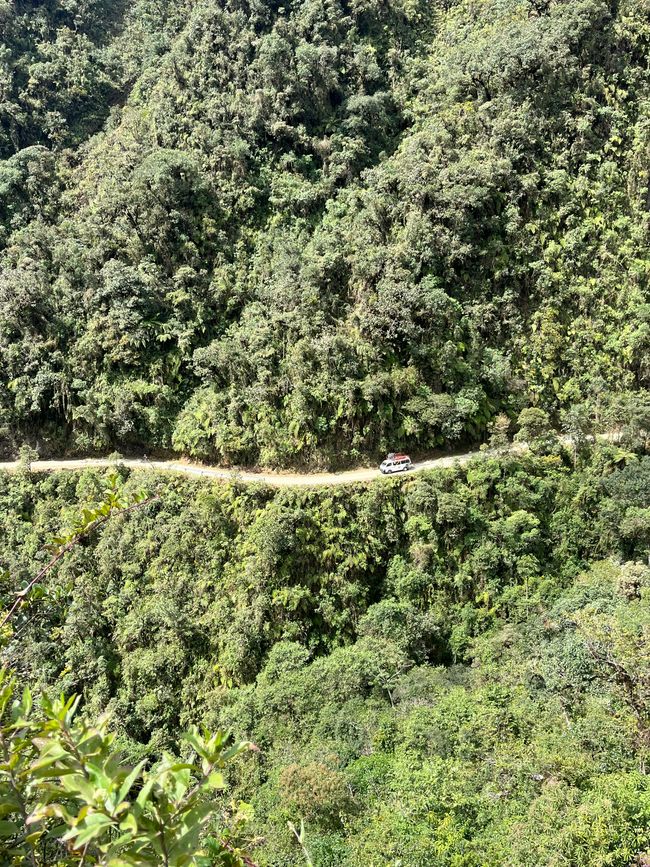

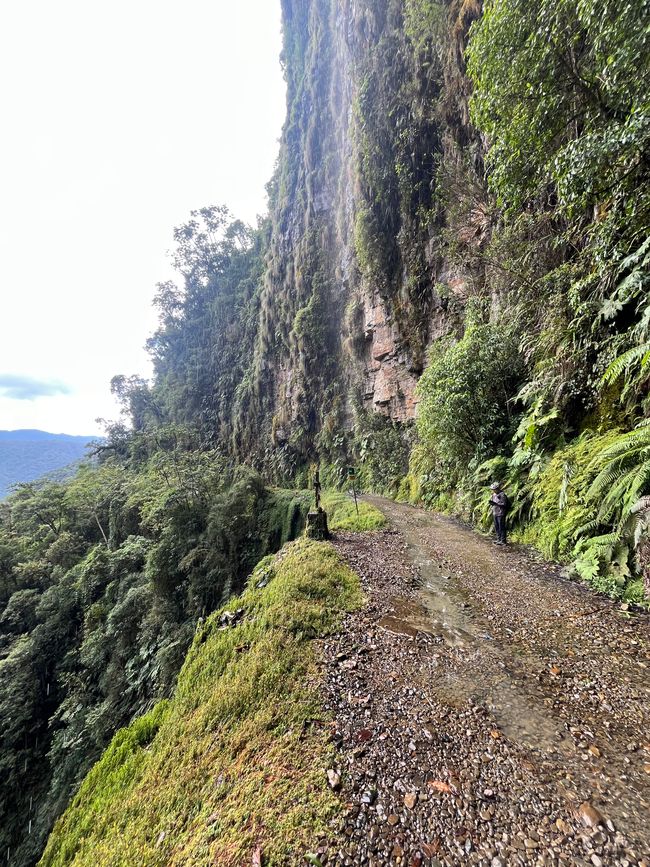
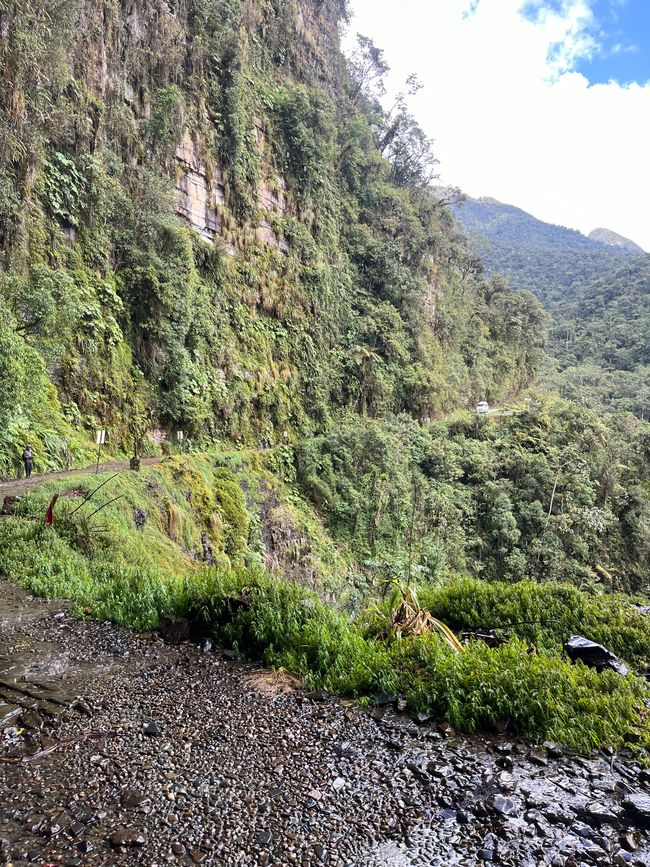
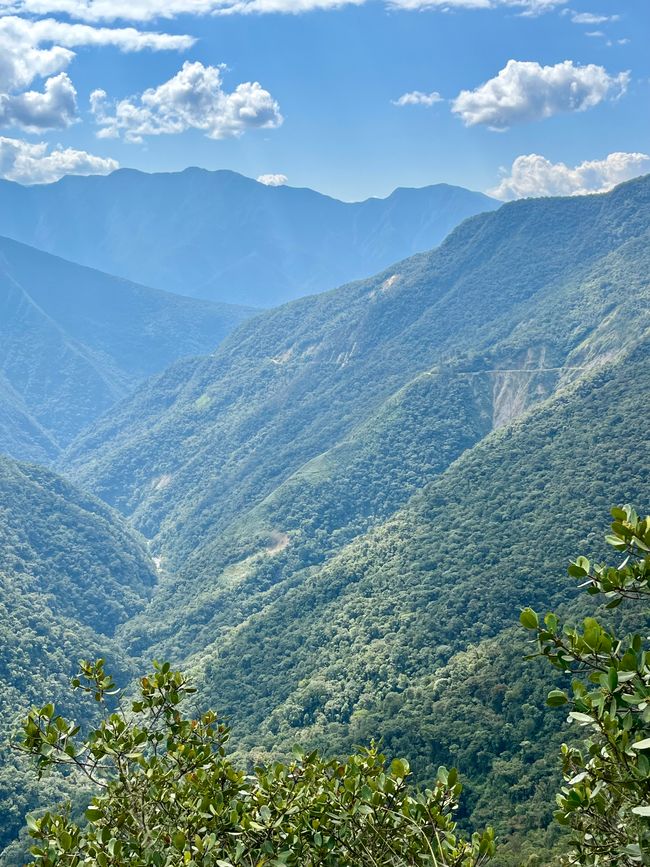


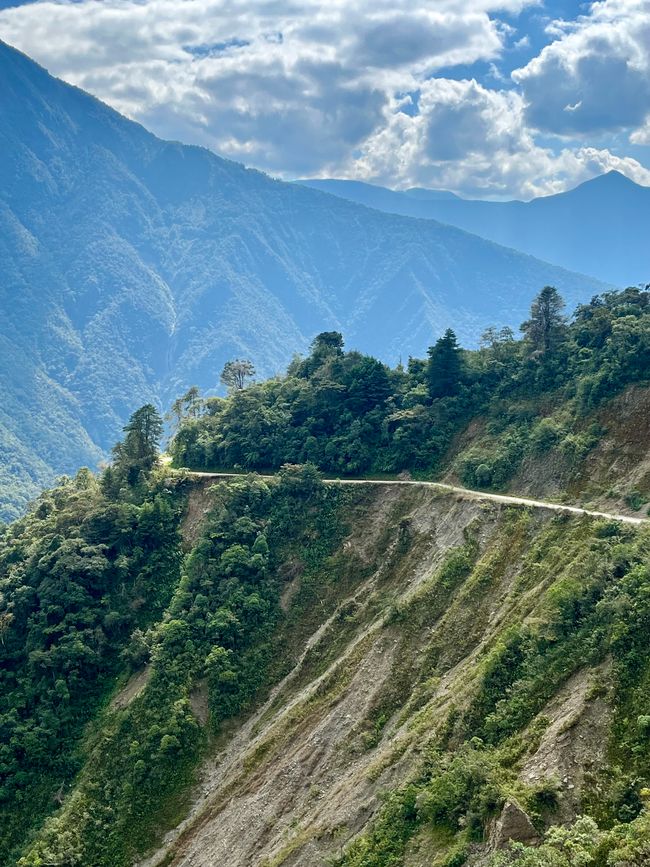
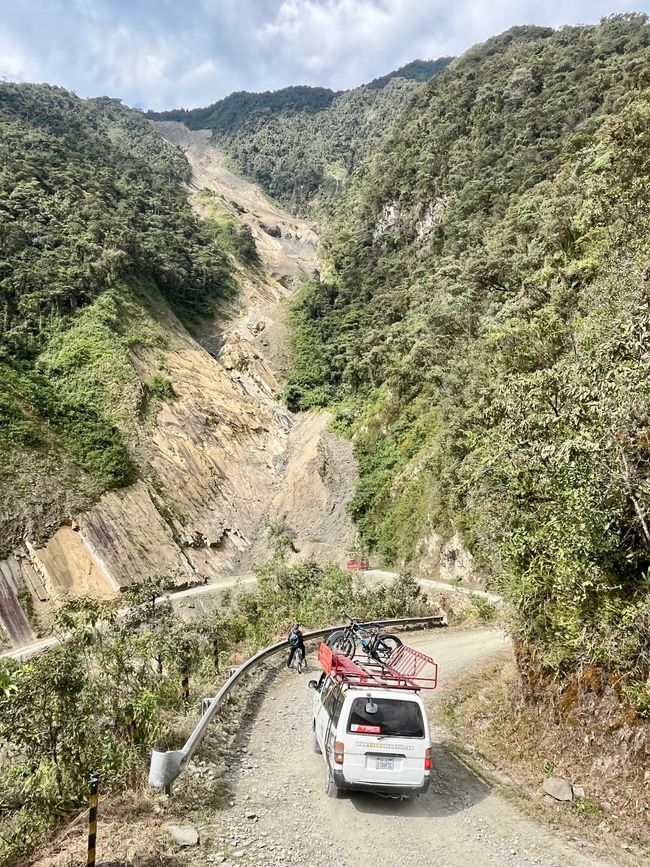
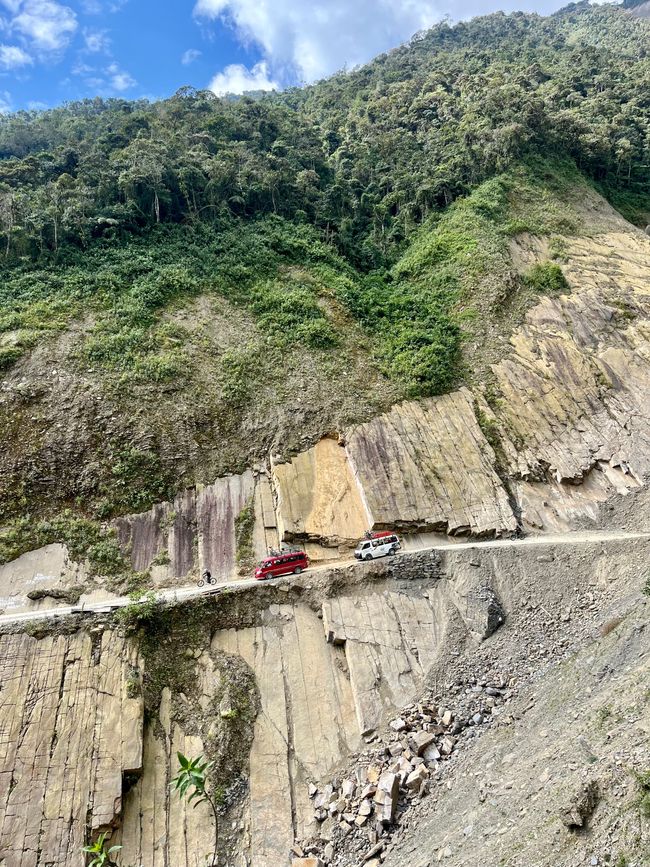
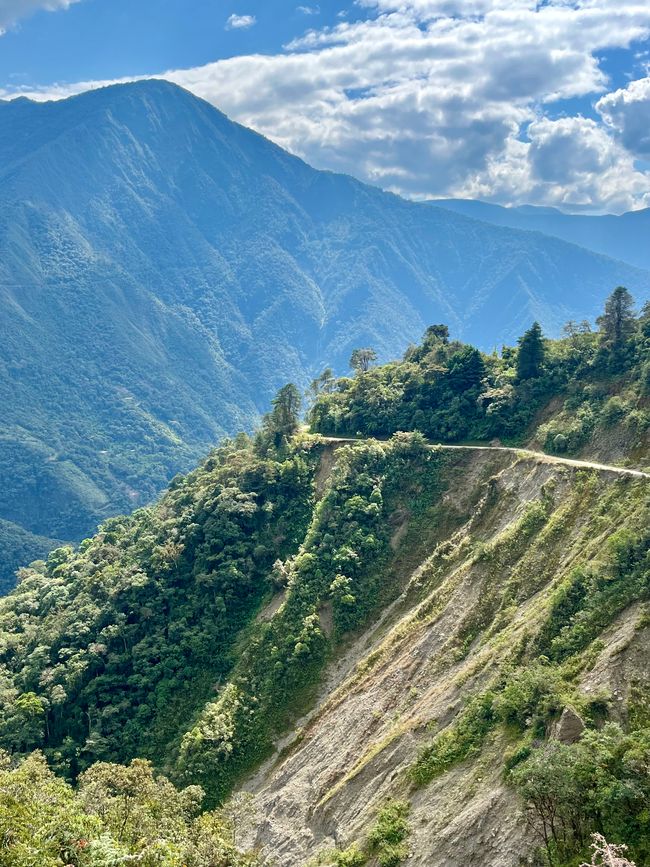
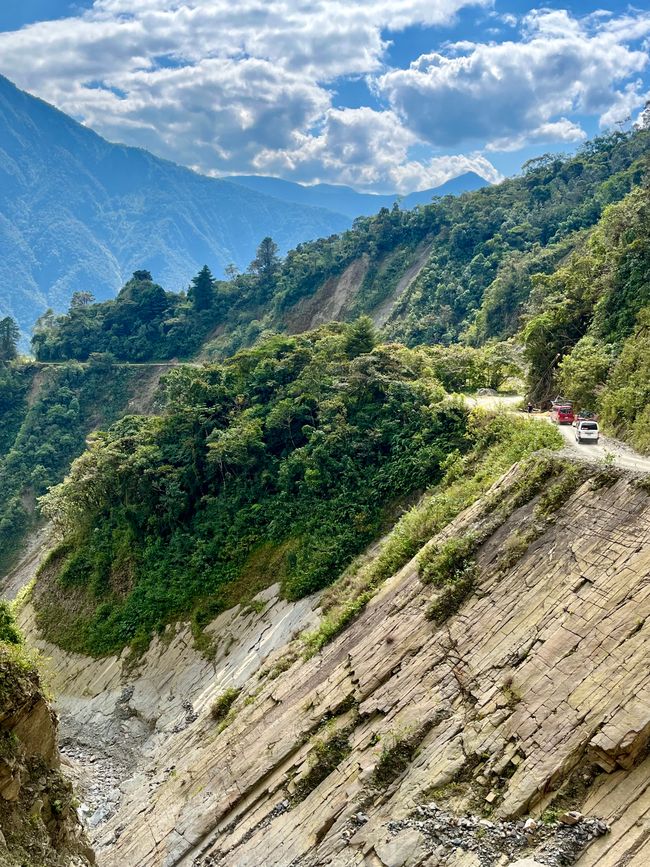
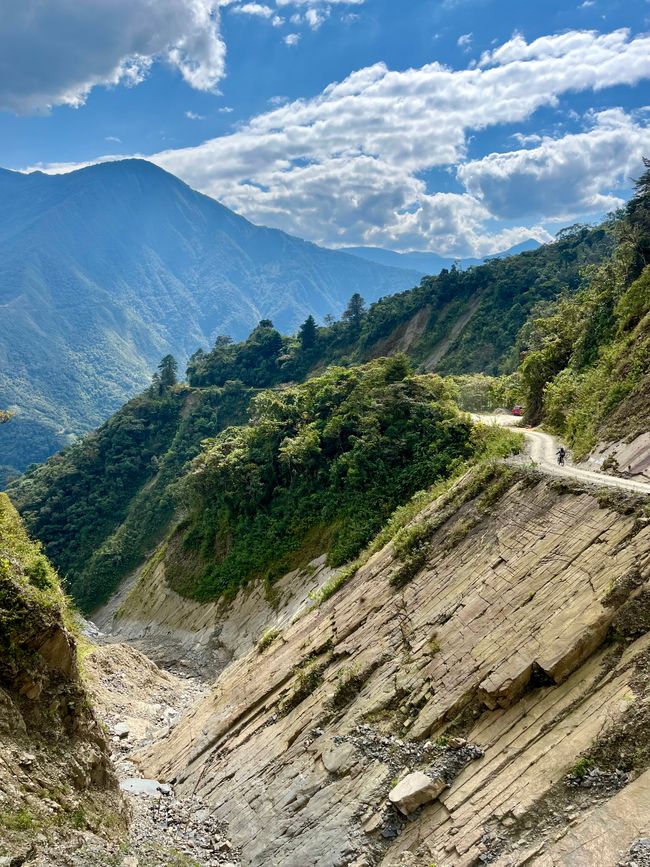
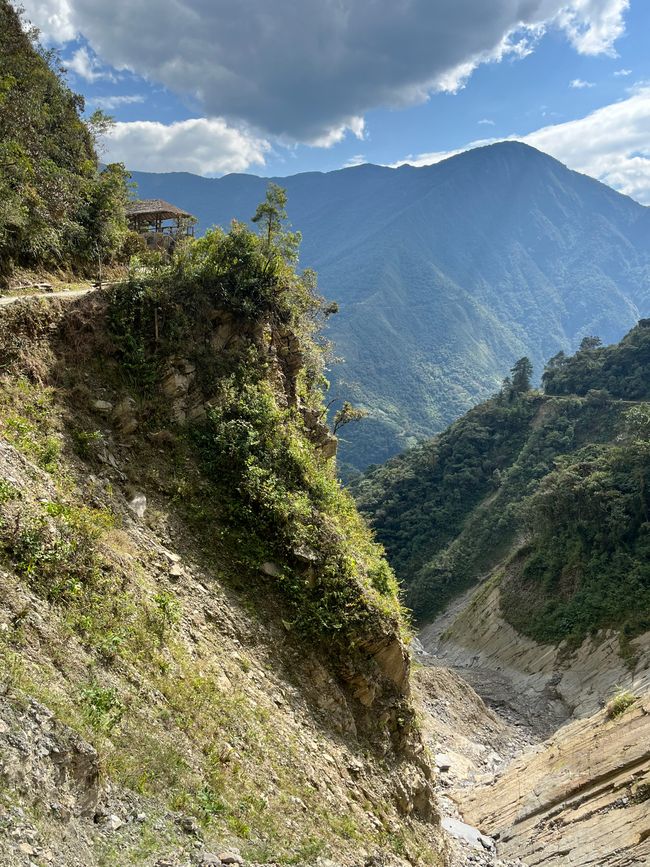
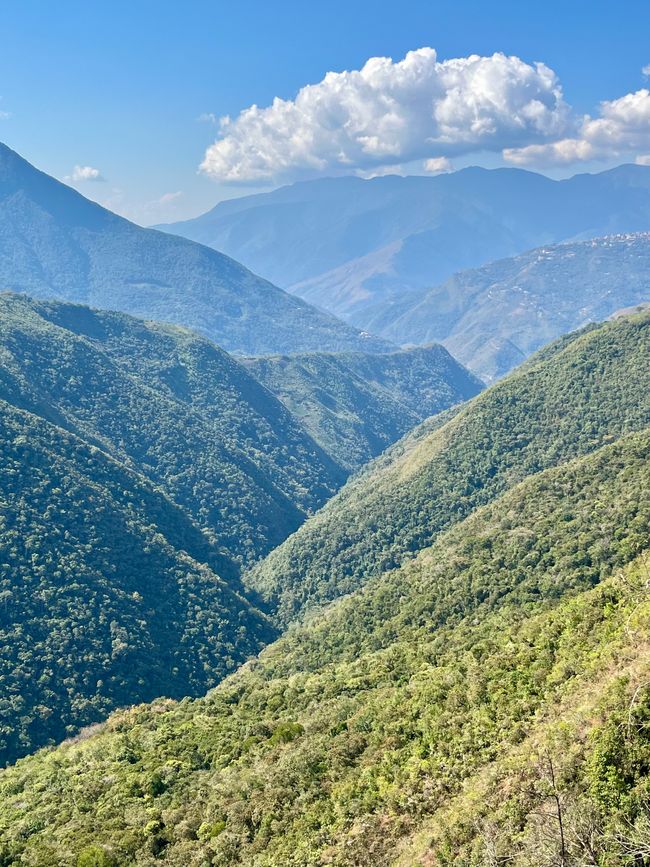
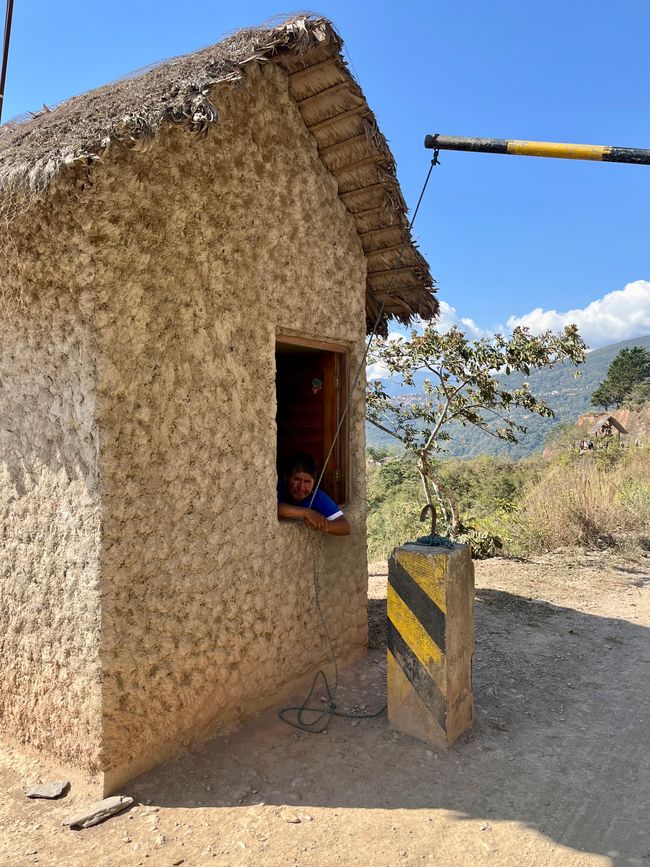
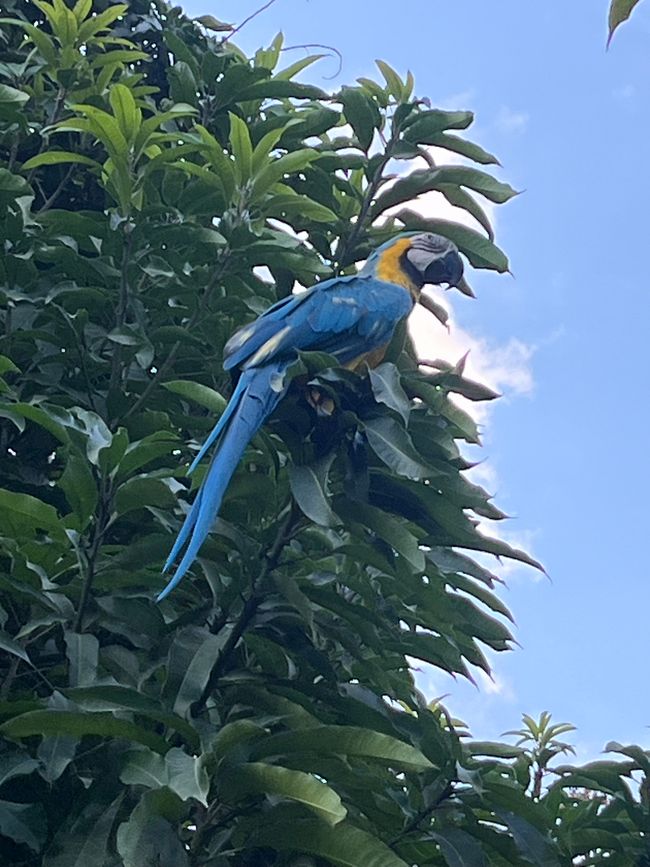
Right after my arrival in La Paz late in the evening, Nim informed me that she had booked a tour for us tomorrow down the legendary Death Road on bicycles. We had discussed this beforehand, but I assumed that I could at least acclimatize in La Paz for a day or two before engaging in any activities. Well, it seems I was wrong, and after a really dreadful night where I hardly slept due to the altitude, we were off early the next morning. We were loaded into vans, with the bikes already stored on the roof, heading up to over 4,600 m in elevation. Since my arrival yesterday, I had only been able to see the city in the dark, so on the ride, I got my first glimpse of the lively chaos that unfolds here during the day. A bit outside the city, the bikes were unloaded, and we received initial instructions and an overview of what to expect that day. For a small extra fee, we had chosen bikes with front and rear suspension, a wise choice that would prove beneficial later. Following this, we were outfitted with various protective gear: jacket and pants with protectors, elbow and knee pads, and gloves. There must be a reason why we suited up so well for this journey.
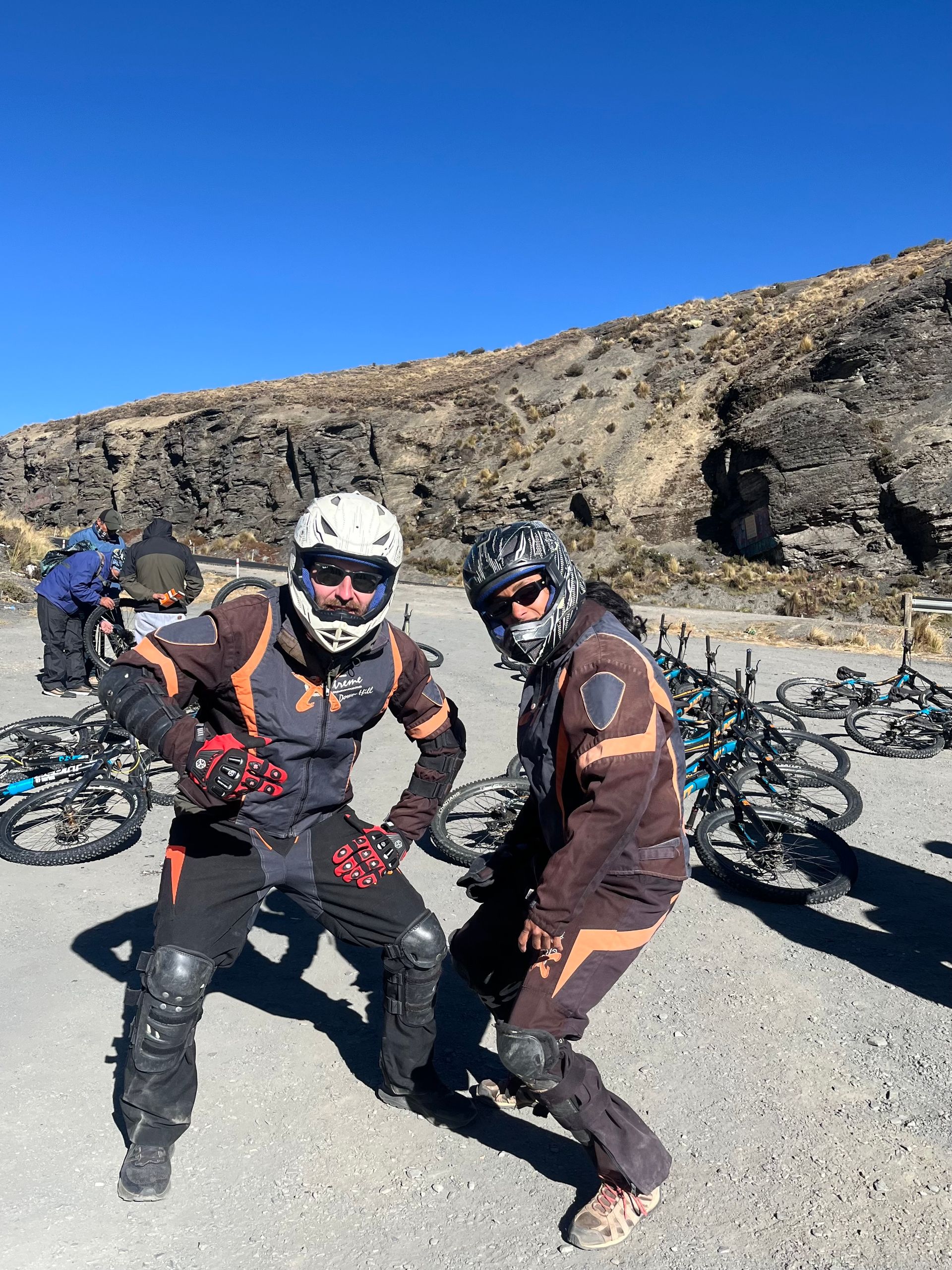
The Death Road or Yungas Road - also known as Camino de la Muerte - was considered the most dangerous road in the world until 2007. It is estimated that approximately 200 – 300 travelers die each year on the route, which stretches for about 65 km and was the main connection between La Paz and the Amazon rainforest until the construction of a new two-lane road. Since the road is now rarely used for regular traffic, it can be navigated relatively easily by mountain bike, crossing nearly all climate zones of South America until reaching the goal at 1,200 m.
Our guide told us that every year, 1 to 2 fatalities occur during the rapid descent, but with our fantastic Transformer-style protective gear, we felt invulnerable! ;)
The first section of the route is driven from the La Cumbre Pass approximately 22 km down the newly paved road into the valley, offering spectacular views of the surrounding mountains and gorges. This section is usually secured with guardrails, and the road surface is quite good. The only issue here is the traffic and the madness displayed by some drivers with their maneuvers. After this section, the actual Death Road begins with its narrow unpaved track and steep cliffs. At some points, the road is only 3 meters wide, running alongside steep drops that fall hundreds of meters. Before we are released onto the unpaved section, we stop at a viewpoint to receive instructions and a warning to stay as far to the right as possible. This rule does not apply when approaching traffic comes, as it is allowed to pass (and this is a feature of this road) on the right from above. This rule was created because vehicles descending can maneuver better, thus allowing the uphill driver to have the side away from the edge.
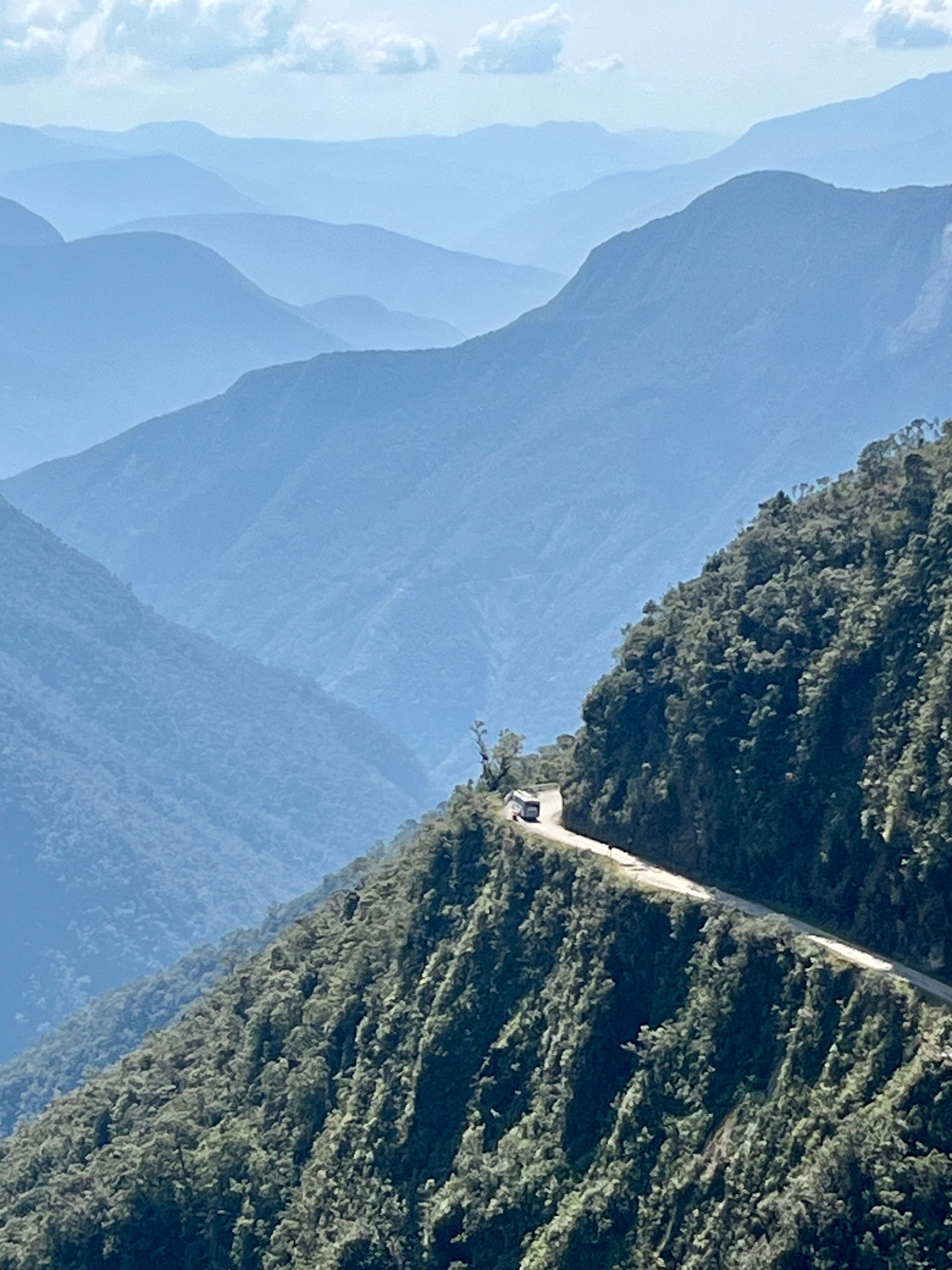
From the viewpoint and the starting point of the actual Death Road, one can also see the course of the road leading further into the valley for the first time and marvel at the steep slopes on the roadside.
Initially quite cautious, we gradually picked up speed as we flew downhill on the unpaved track. It’s impressive what the bikes can endure and especially how much they can take. Perhaps a false assumption, but I felt surprisingly comfortable and safe on the mountain bike after just a short while, and the ride became wilder and wilder. I often waited at a spot with a spectacular view (and there are plenty) for Nim, and then took off again down the road with full speed. Nim also felt increasingly secure on the bike after a while, and we had a blast during the descent without really putting ourselves at risk, as we all wanted to arrive safely in the valley despite the adrenaline rush.
As we raced down the steep slopes, dramatic panoramas opened up with deep gorges and lush forests. At one point along the route, we even rode underneath a waterfall. Absolutely spectacular, and I would have loved to rewind time for a moment to observe the traffic that once struggled up and down this mountain before the new Yungas Road was built.
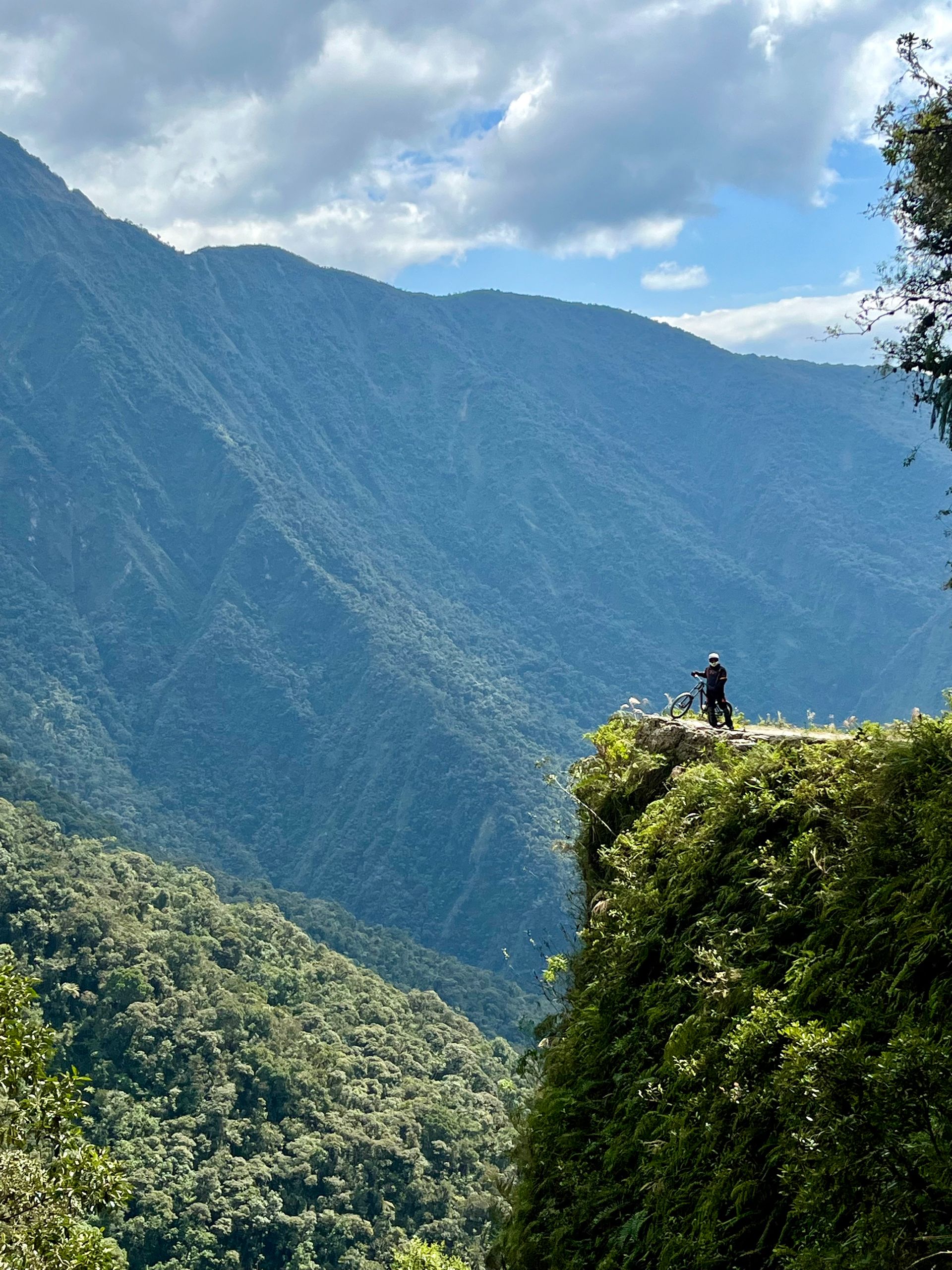
Around noon, we stopped at a wider section of the road for snacks, pancakes with Dulce de Leche, and fruit. After that, we continued into the valley, and I could clearly sense that the whole group (there were 12 of us crazy people in total) had become more confident with the bicycles, as the descent speed noticeably increased.
In the final kilometers before reaching the valley, we split off from the rest of the group with our 6-member team and engaged in a real race with position battles. Here the track was a bit wider, and it was genuinely fun to continue racing in a competitive spirit. Other than a small faux pas by a Frenchman who narrowly skimmed the edge with his rear wheel just before me in a curve (the Frenchman claimed it was relaxed, from my perspective it was inches away), there were no significant complications, and at high speed, the group sped towards the finish with a few position changes here and there. Upon arrival at the bottom, we all embraced. Bursting with adrenaline, we collectively realized what an incredible experience the past few hours had been. With faces covered in mud and dust, and aching wrists, we were served ice-cold beer, and we reveled in this eventful day. A big shoutout here once again for our decision to take the full suspension bikes. During the wild ride, we got jolted around so much that, without full suspension, my wrists would likely need to be in serious recovery mode.
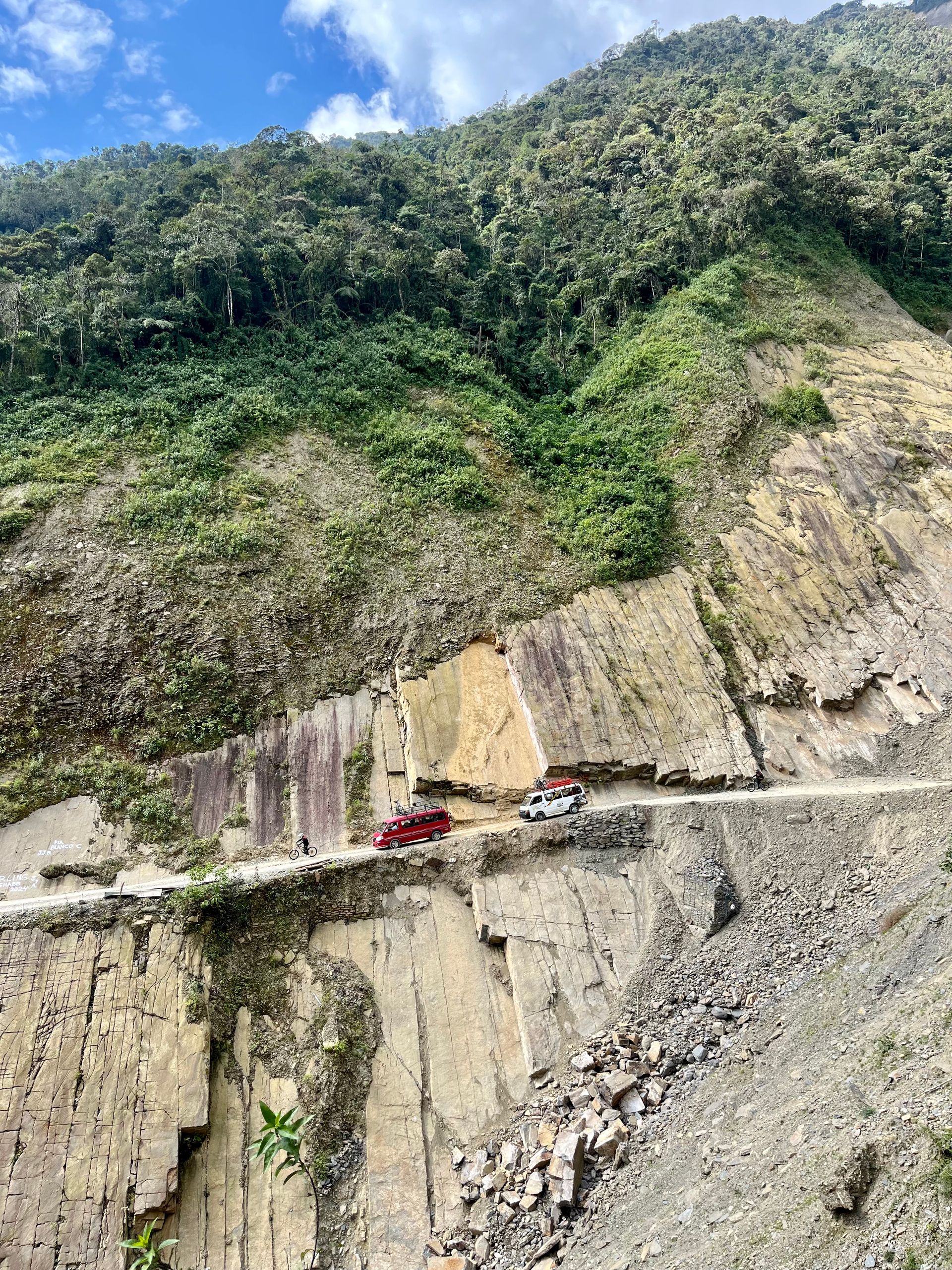
After an hour, the bikes were loaded back on the roof, and we headed to one of the nearby villages in the valley, where dinner included in the price was served in tropical temperatures and dense forest. What a contrast to La Paz. The buffet was abundant and delicious, and to aid digestion, we lounged by or in the pool, admiring the colorful macaws that were frolicking in the trees.
On the subsequent long return trip – it took us almost 5 hours to reach La Paz – we shared many stories or just chatted about random nonsense before happily heading to bed.
In the end, it’s once again clear that some experiences are more than just adrenaline and adventure, even if it doesn’t seem that way at first glance. The crazy journey on the Death Road was not only a challenge but also a moment of pause amidst the wild nature of Bolivia – an experience that lingers long after.
ഉത്തരം

യാത്രാ റിപ്പോർട്ടുകൾ ബൊളീവിയ
